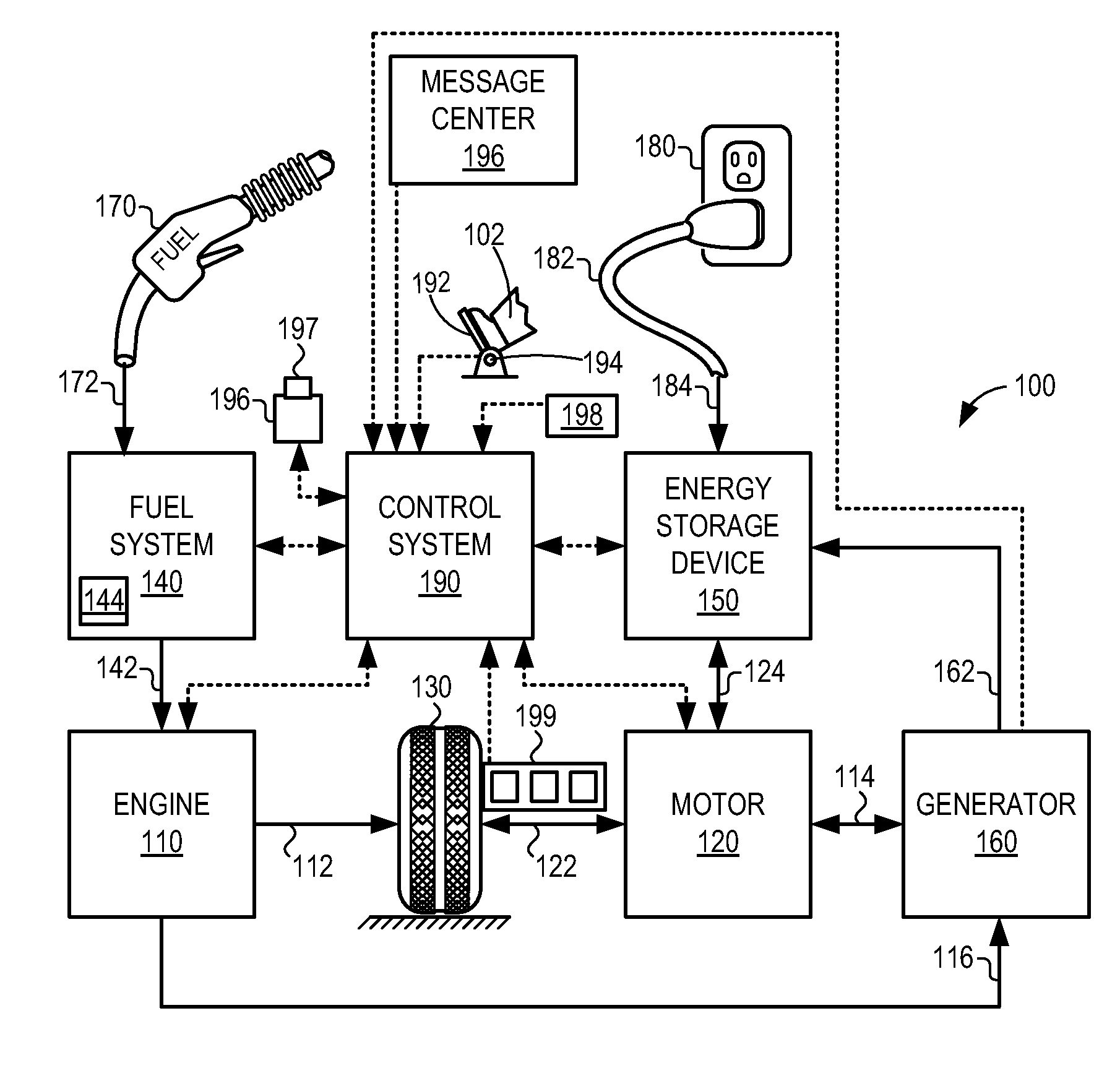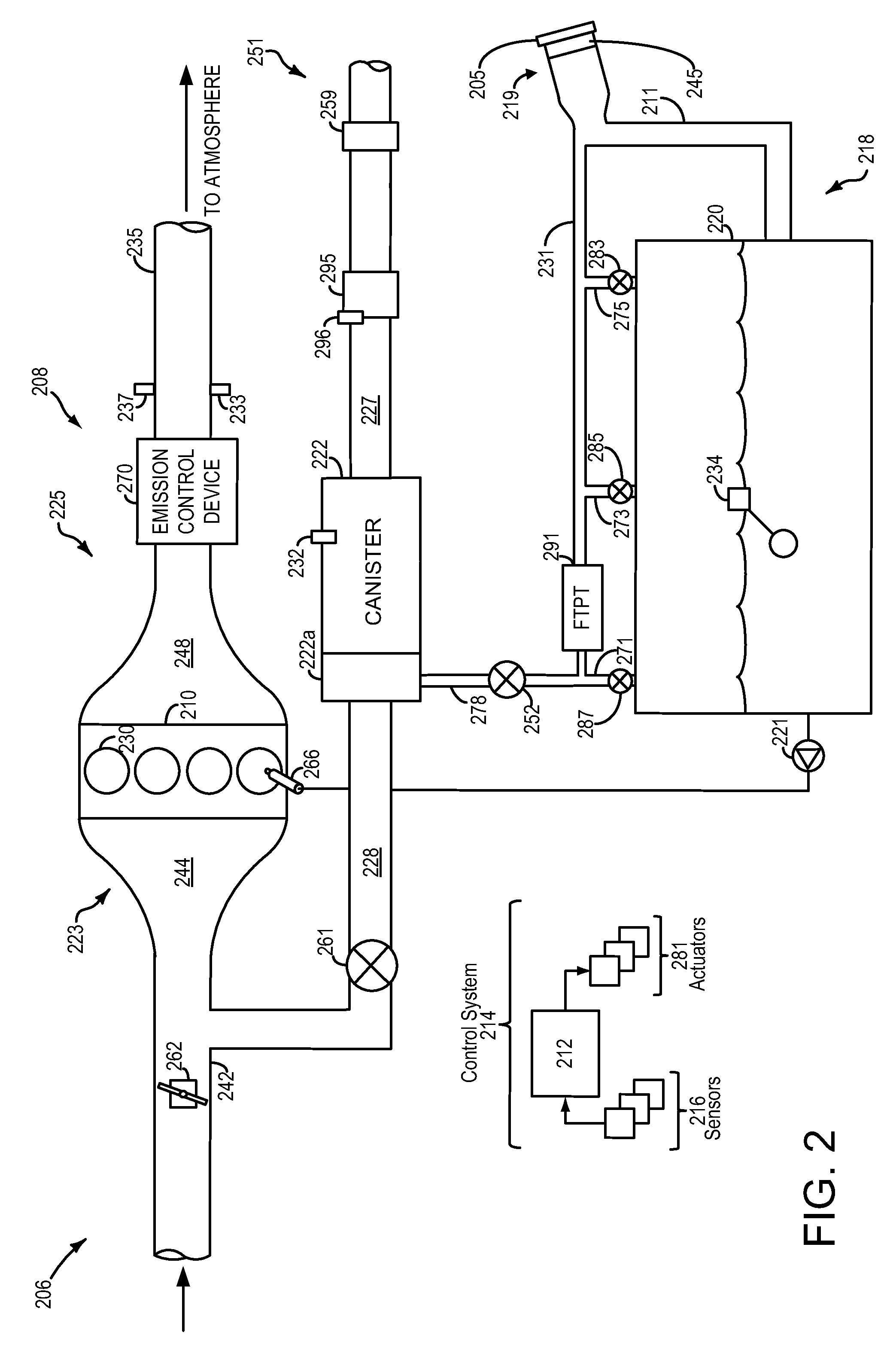System and methods for refueling a vehicle
a vehicle and system technology, applied in the direction of liquid handling, electrical control, packaged goods type, etc., can solve the problems of engine stalling, unusable, engine stalling, etc., and achieve the effect of reducing the release of fuel vapors
- Summary
- Abstract
- Description
- Claims
- Application Information
AI Technical Summary
Benefits of technology
Problems solved by technology
Method used
Image
Examples
Embodiment Construction
[0017]This detailed description relates to systems and methods for refueling a vehicle. In particular, the description relates to systems and methods for depressurizing a fuel tank with a single stage fuel tank isolation valve via controlled depressurization. A refueling event may take place in a hybrid vehicle, such as the hybrid vehicle schematically depicted in FIG. 1. The hybrid vehicle may comprise a fuel system and evaporative emissions system, as depicted in FIG. 2. The hybrid vehicle may further comprise an evaporative leak check module (ELCM), comprising a vacuum pump and changeover valve (COV) operable to various configurations, as shown in FIGS. 3A-3D. During the fuel tank depressurization, the ELCM may be positioned to restrict air flow, thereby controlling the rate of depressurization, as shown by the method depicted in FIG. 4. FIG. 5 shows an example timeline for a refueling event using the method of FIG. 4.
[0018]FIG. 1 illustrates an example vehicle propulsion system ...
PUM
 Login to View More
Login to View More Abstract
Description
Claims
Application Information
 Login to View More
Login to View More - R&D
- Intellectual Property
- Life Sciences
- Materials
- Tech Scout
- Unparalleled Data Quality
- Higher Quality Content
- 60% Fewer Hallucinations
Browse by: Latest US Patents, China's latest patents, Technical Efficacy Thesaurus, Application Domain, Technology Topic, Popular Technical Reports.
© 2025 PatSnap. All rights reserved.Legal|Privacy policy|Modern Slavery Act Transparency Statement|Sitemap|About US| Contact US: help@patsnap.com



